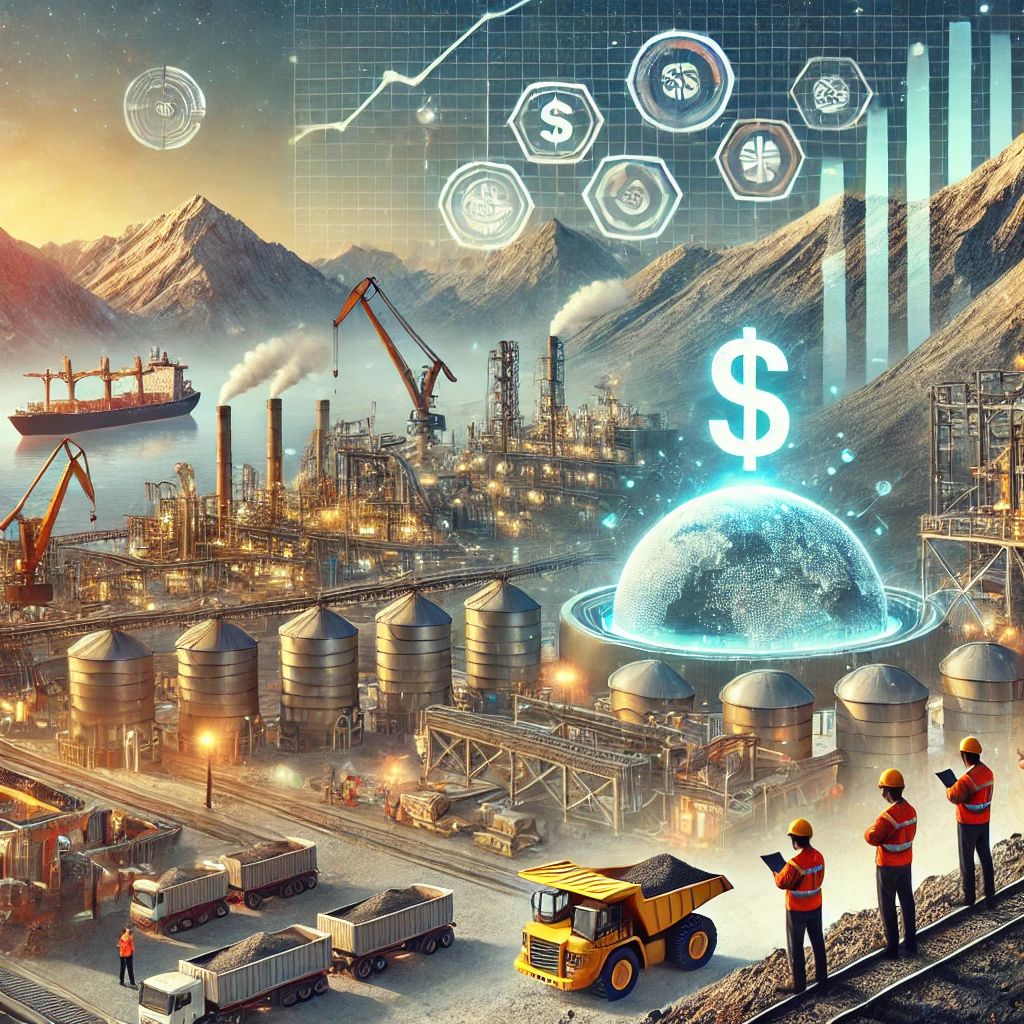Pakistan is endowed with a rich and diverse range of natural resources, making its minerals and mining sector a crucial driver of economic growth. From precious metals to industrial minerals, the country has immense untapped potential. With recent infrastructure developments, safety advancements, and growing investment, the sector is poised to flourish, although challenges remain.
The Growth of Pakistan’s Minerals and Mining Sector
Pakistan’s mining sector contributes significantly to its economy, employing thousands of workers and supporting allied industries. Key minerals include gypsum, limestone, marble, onyx, rock salt, coal, iron ore, chromite, copper, and bauxite. The country is also rich in gemstones and industrial minerals like silica sand, fly ash, pumice stone, and calcium carbonate.
The Riko Diq project, one of the world’s largest untapped copper-gold reserves, is a milestone for Pakistan’s mining ambitions.
Balochistan, with its abundant mineral resources, is gaining attention from global investors and policymakers.
The Gwadar port and the China-Pakistan Economic Corridor (CPEC) are transforming transportation infrastructure, creating opportunities to export minerals efficiently.
With continuous reforms and exploration initiatives, the minerals sector is expanding, attracting domestic and foreign investment.
Safety Improvements in the Mining Sector

Mining has historically been associated with hazardous conditions, particularly in regions where safety standards have lagged. In recent years, Pakistan has made strides to address these concerns:
Implementation of Safety Protocols:
Regulatory bodies are enforcing safety guidelines, such as proper ventilation systems, protective equipment, and emergency response plans.
Training and Awareness:
Workers are being trained on safety procedures to reduce the risks of accidents.
Modern Technologies:
The adoption of modern mining equipment and automation is minimizing human exposure to dangerous environments.
Despite these efforts, the informal and small-scale mining sector still struggles with safety lapses, which require further attention.
Infrastructure Developments
Infrastructure is a key enabler for the growth of Pakistan’s mining sector. Significant improvements include:
CPEC Projects:
CPEC has brought about better roads, rail networks, and connectivity, especially in mineral-rich areas like Balochistan and Gilgit-Baltistan.
Port Developments:
Facilities like Gwadar Port and Port Qasim are enhancing the export potential for minerals.
Power and Water Solutions:
Steps are being taken to address power shortages and ensure water availability, which are essential for mining operations.
These infrastructure upgrades are bridging gaps and enabling efficient extraction, processing, and transportation of minerals to domestic and international markets.
Investment Opportunities

Pakistan’s mineral sector offers lucrative investment opportunities:
Foreign Direct Investment (FDI): With an abundance of untapped reserves, Pakistan welcomes foreign investors, especially in exploration, mining, and processing.
Public-Private Partnerships: Joint ventures between the government and private entities can enhance technological and financial resources.
Value Addition: Investments in refining and processing plants can unlock greater profitability by exporting finished products rather than raw minerals.
Government incentives like tax benefits and simplified regulatory frameworks are further attracting investors.
Benefits of the Minerals Sector
1. Economic Growth: The sector boosts GDP, generates employment, and supports industries like cement, construction, and steel.
2. Foreign Exchange: Exporting minerals and processed products strengthens Pakistan’s trade balance.
3. Job Creation: From mining engineers to manual laborers, the sector provides livelihood opportunities.
4. Industrial Development: Minerals like fly ash and gypsum play a vital role in infrastructure projects and industrial manufacturing.

Drawbacks and Challenges
Despite the sector’s potential, challenges remain:
1. Outdated Practices: Many mines rely on outdated methods, leading to inefficiencies and environmental degradation.
2. Safety Issues: Informal mining operations often lack proper safety standards.
3. Lack of Investment: Bureaucracy and inconsistent policies deter foreign investors.
4. Environmental Concerns: Mining activities often cause deforestation, water pollution, and land degradation.
5. Resource Mismanagement: Limited exploration and poor resource management have hindered sustainable development.
The Way Forward
To unlock the full potential of the minerals and mining sector, Pakistan needs:
Modernization of Mining Technologies: Investing in advanced equipment and sustainable practices.
Policy Reforms: Ensuring consistent policies and regulatory frameworks to attract investors.
Focus on Safety: Enforcing safety standards and providing proper training for workers.
Value Addition: Developing industries to process minerals locally for better returns.
Sustainability:
Promoting eco-friendly mining practices to reduce environmental impact.

Conclusion
Pakistan’s minerals and mining sector stands at a crossroads, with opportunities for economic growth and development on the horizon. While the sector faces challenges like safety concerns, outdated practices, and environmental issues, infrastructure developments and investments offer hope for a brighter future. By adopting modern practices, fostering investment, and ensuring safety and sustainability, Pakistan can position itself as a leading player in the global mining industry.
The journey towards sustainable growth in this sector will not only strengthen Pakistan’s economy but also improve livelihoods and industrial capacity for years to come.







